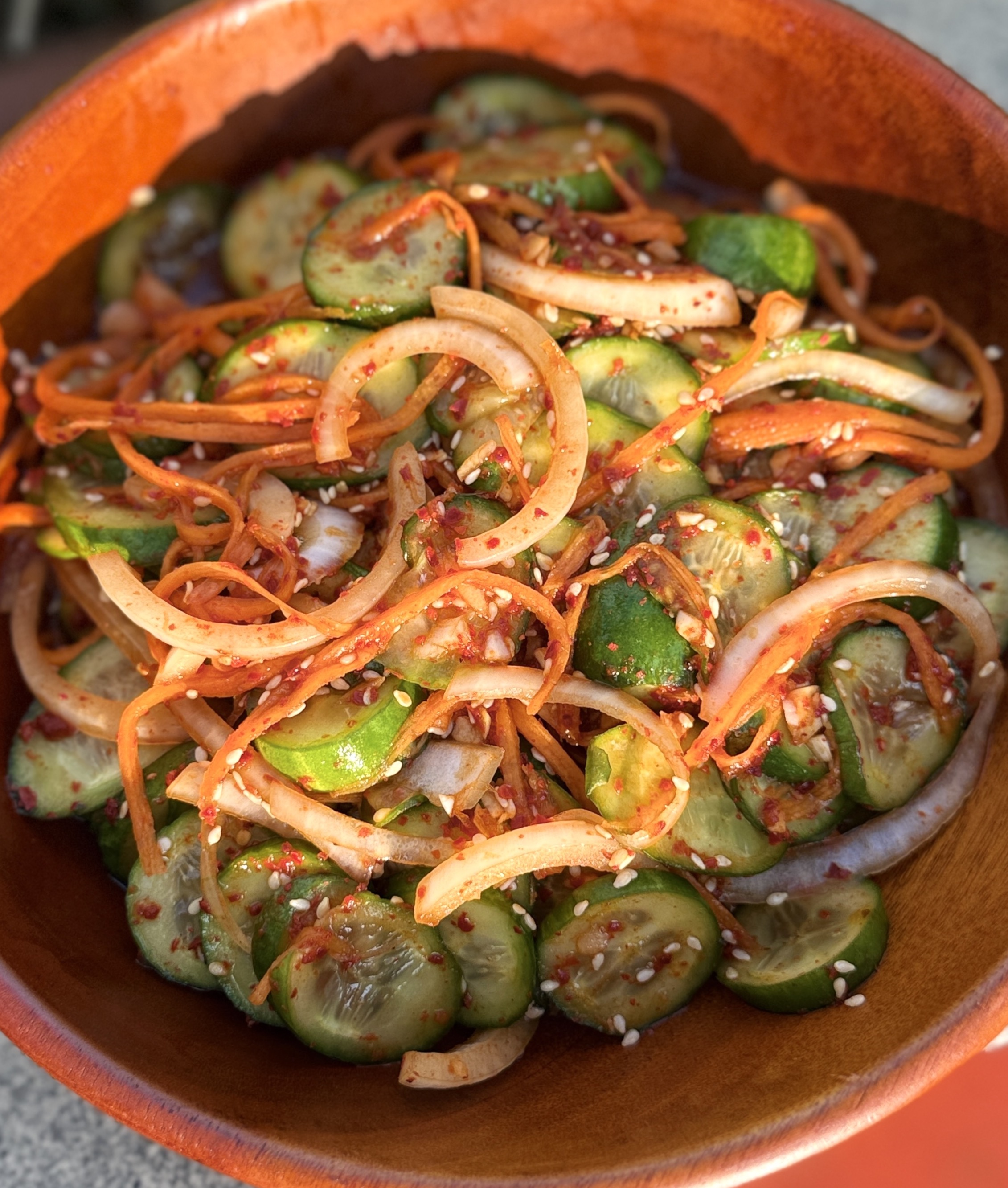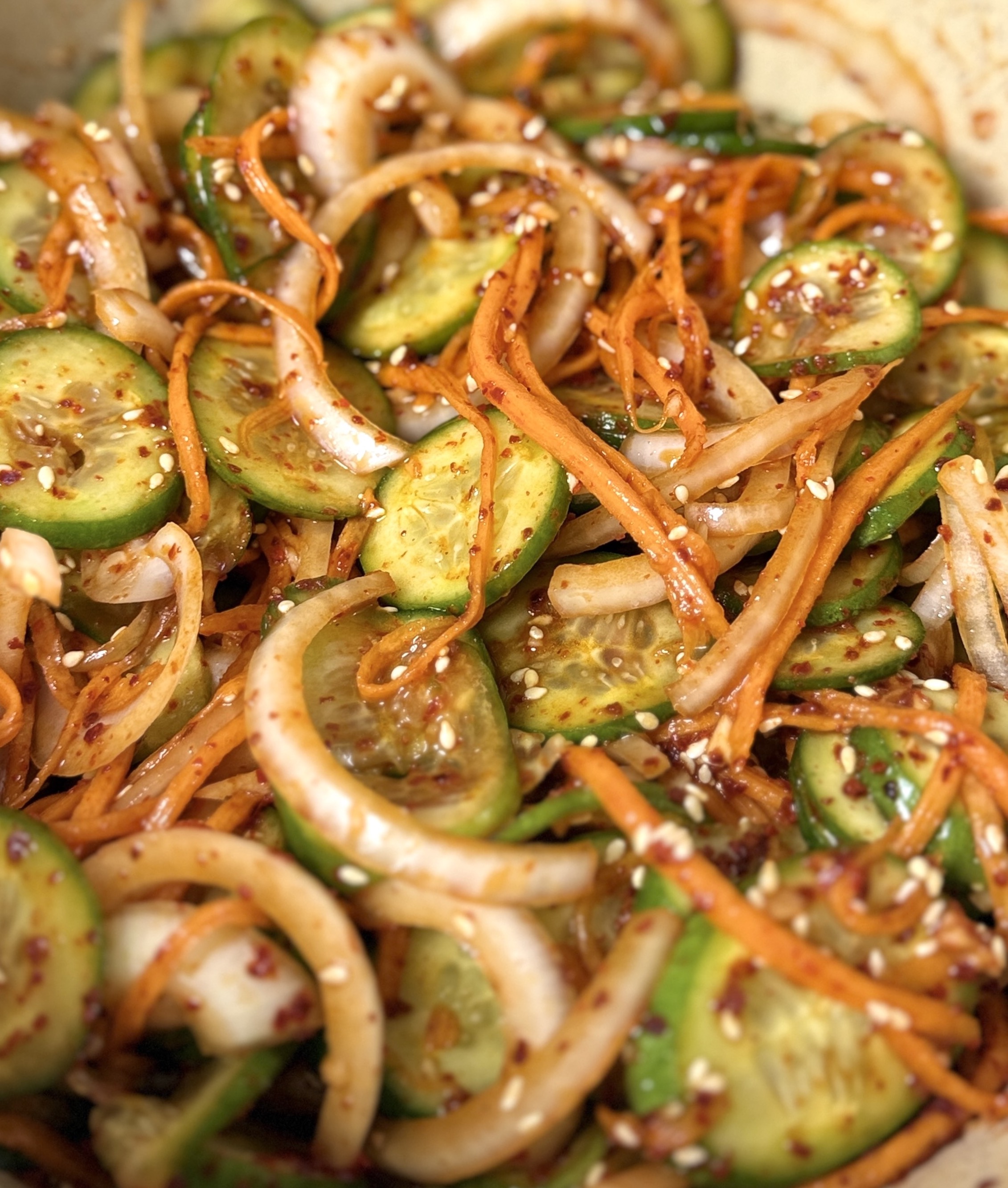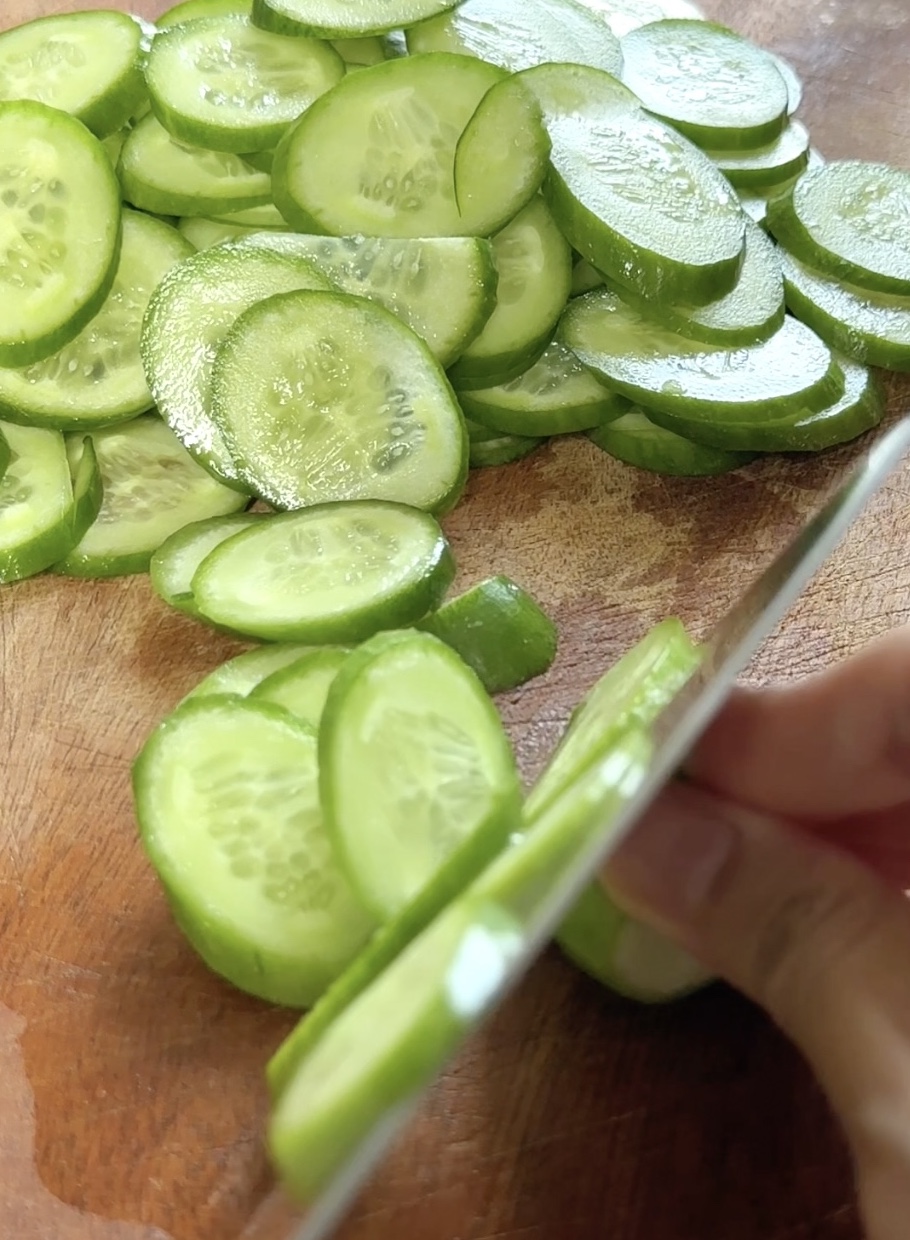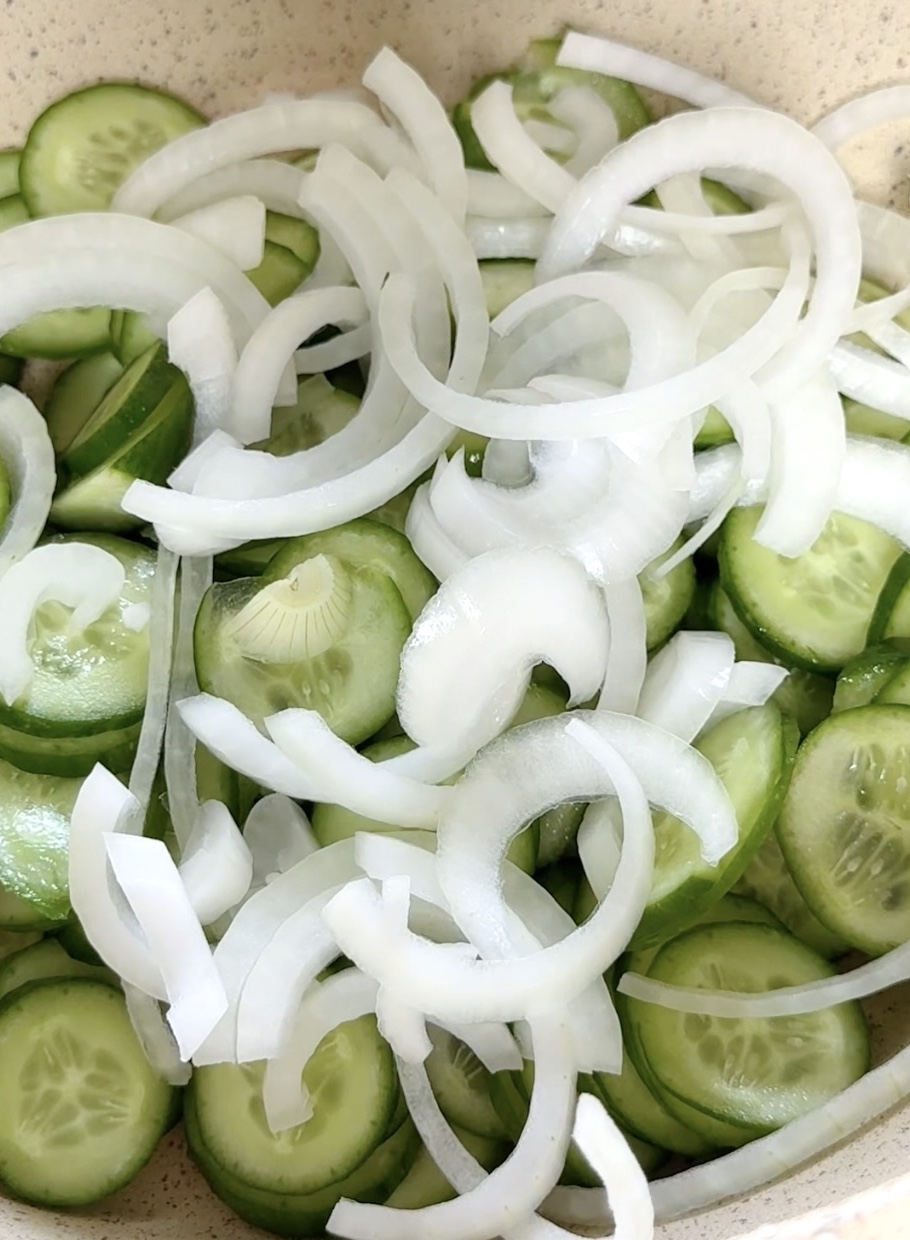Some salads whisper. This one shouts — in the best way possible.
Oi Muchim is one of those dishes that instantly brings balance to a meal. It’s light, crunchy, spicy, and tangy all at once. Whether it’s sitting next to a bowl of rice, tucked beside grilled meat, or served as a refreshing snack in the middle of the day, this Korean spicy cucumber salad is a flavor bomb that wakes up your tastebuds.
Why I Love This Dish
I first had Oi Muchim at a tiny BBQ spot in Seoul. It came out with a dozen other banchan (side dishes), but this one stopped me in my tracks. It was cold. It was spicy. It crunched like a fresh apple. And the best part? The heat lingered just enough to make you reach for another bite.
Ever since, it’s become my go-to reset dish. When I’m tired of takeout or heavy meals, this is what I crave. It’s light, clean, and full of character.
Back home, it reminds me so much of how we treat vegetables in Vietnamese cooking — bright, tangy, often raw or lightly pickled, and always full of life. Growing up in a Vietnamese household, there was always something fresh and crunchy on the table — cucumber slices dipped in soy sauce, pickled carrots in fish sauce, or tangy cabbage with just the right bite.
So when I made this Korean cucumber salad for the first time and shared it with my mom, she instantly loved it. Now, she even makes it for our family too. It’s that perfect blend of familiar and new.
So, what makes this salad so addictive => It’s the combo of cold, crisp cucumber and that spicy dressing that gets better with every bite. On hot days, it’s like an edible air conditioner. I’ll eat it straight from the bowl, usually while standing at the fridge door. It’s that good.


Oi Muchim, But Make It Yours
One thing I love about this dish is how customizable it is. Want it spicier? Add more gochugaru or a spoon of chili crisp. Like it sweet? Toss in a bit more sugar or even some grated apple (a Korean trick). It’s a salad, but it plays by your rules.
Sometimes I’ll throw in leftover shredded chicken or top it with roasted seaweed flakes if I’m turning it into a quick lunch. That’s what I love about Korean home cooking - it’s bold, unpretentious, and flexible.
Ingredient Breakdown
Korean or Persian cucumbers (or English cucumber) : Thin-skinned, crisp, and perfect for absorbing the dressing.
Carrot : Adds sweetness, crunch, and color.
Brown onion : Sliced thin for sharpness and texture.
Gochugaru (Korean red pepper flakes) : The heart of the heat. Adjust to taste!
Rice vinegar : For brightness and acidity.
Soy sauce : Adds saltiness and umami.
Sesame oil : Nutty depth and aroma.
Sugar : Balances out the spice and vinegar.
Garlic: Adds a hint of warmth and savoriness.
Sesame seeds : A little crunch and visual flair.


Notes on Making It
Slice it thin: The thinner the cucumber, the better it absorbs flavor and stays crisp. If you're using English cucumbers, scoop out the seeds to avoid sogginess.
Spice Level: Start with 1 tbsp gochugaru and adjust. Want more fire? Add a bit of chili oil or even a pinch of fresh chili.
Let it sit: After mixing, give it 5–10 minutes to rest. The flavors deepen and mellow out.
Serving Ideas: Serve it cold with rice, grilled meats, tofu, or even ramen. Sometimes I top it with seaweed flakes or throw in leftover shredded chicken to make it a meal.
Storage Tip: Eat it fresh! If you plan on leftovers, store the dressing separately and toss before serving to keep the crunch.








